Your search returned 93 results in the Category: mind & body - human anatomy & physiology.
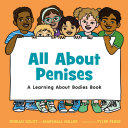
ALL ABOUT PENISES
By: dorian solot | Published: April 2024
Head, shoulders, knees, and... penises! Young children are curious about all their body parts, including the private ones. Many parents are unsure... [Read More]
Head, shoulders, knees, and... penises! Young children are curious about all their body parts, including the private ones. Many parents are unsure how to answer their questions in a way that’s accurate, age-appropriate, and understandable. This book is here to help! With bright illustrations, readable language, and a matter of fact tone, this book offers children the facts they need to understand how their bodies work. All About Penises: a learning about bodies book embraces body diversity, reassures kids, and provides caregivers an easy way to answer the common questions that children have.
- ISBN
9781250852588 - Binding
Hardcover - Category
Mind & Body - Human Anatomy & Physiology
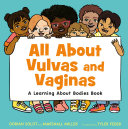
ALL ABOUT VULVAS & VAGINAS
By: dorian solot | Published: April 2024
A picture book from two professional educators that introduces children to scientific facts about vulvas and vaginas in a shame-free and accessible... [Read More]
A picture book from two professional educators that introduces children to scientific facts about vulvas and vaginas in a shame-free and accessible way. Head, shoulders, knees, and...vaginas! Young children are curious about all their body parts, including the private ones. Many parents are unsure how to answer their questions in a way that?s accurate, age-appropriate, and understandable. This book is here to help! With bright illustrations, readable language, and a matter of fact tone, this book offers children the facts they need to understand how their bodies work. All About Vulvas and Vaginas: a learning about bodies book embraces body diversity, reassures kids, and provides caregivers an easy way to answer the common questions that children have. With an updated understanding of gender, this is the book for the modern caregiver. Back matter includes more information on being an askable parent, and how to talk to young children about sensitive topics.
- ISBN
9781250852571 - Binding
Hardcover - Category
Mind & Body - Human Anatomy & Physiology
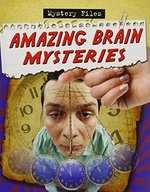
AMAZING BRAIN MYSTERIES
By: cynthia obrien | Published: February 2015
Discusses what is known about the brain and how it works and examines situations that people claim to experience but that cannot yet be explained,... [Read More]
Discusses what is known about the brain and how it works and examines situations that people claim to experience but that cannot yet be explained, including premonitions, the unusual experiences of some twins, and memories of past lives. "About this title" may belong to another edition of this title.
- ISBN
9780778780748 - Binding
Paperback Canadian - Category
Mind & Body - Human Anatomy & Physiology
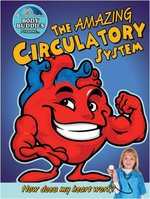
AMAZING CIRCULATORY SYSTEM
By: john burnstein | Published: January 2009
Explores the workings of the heart and circulatory system in the human body. "About this title" may belong to another edition of this title.
- ISBN
9780778744313 - Binding
Hardcover - Category
Mind & Body - Human Anatomy & Physiology
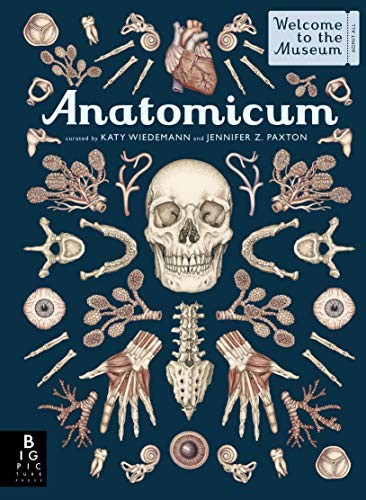
ANATOMICUM
By: jennifer paxton | Published: September 2020
- ISBN
9781536215069 - Binding
Hardcover - Category
Mind & Body - Human Anatomy & Physiology
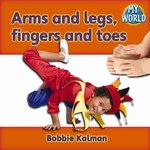
ARMS & LEGS FINGERS & TOES
By: bobbie kalman | Published: January 2010
Labeled photographs of children engaged in various activities provide the words for the parts of the arm and the leg. "About this title" may belong... [Read More]
Labeled photographs of children engaged in various activities provide the words for the parts of the arm and the leg. "About this title" may belong to another edition of this title.
Theme: Kindergarten
- ISBN
9780778794165 - Binding
Hardcover Canadian - Category
Mind & Body - Human Anatomy & Physiology
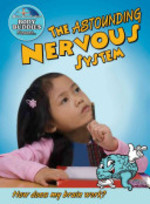
ASTOUNDING NERVOUS SYSTEM
By: john burnstein | Published: January 2009
Explains how the brain and nervous system function.
- ISBN
9780778744283 - Binding
Paperback - Category
Mind & Body - Human Anatomy & Physiology
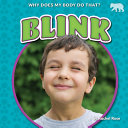
BLINK - WHY DOES MY BODY DO THAT
By: rachel rose | Published: January 2023
I look around and my eyes do something, even when I don't realize it. They blink! Why does my body do that? Explore the silly body science of blinks.... [Read More]
I look around and my eyes do something, even when I don't realize it. They blink! Why does my body do that? Explore the silly body science of blinks. Learn why blinks happen, why they are healthy, and more. Lively text and bright layouts make this a perfect fit for budding scientists asking big body questions.
- ISBN
9798885094566 - Binding
Paperback - Category
Mind & Body - Human Anatomy & Physiology
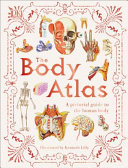
BODY ATLAS
By: dk | Published: September 2020
The Body Atlas takes you on a head-to-toe tour through your own anatomy. How well do you know your own body? Do you know what happens under your... [Read More]
The Body Atlas takes you on a head-to-toe tour through your own anatomy. How well do you know your own body? Do you know what happens under your skin? Where exactly is your stomach? What does your liver do? How can ears help your balance? The Body Atlas answers all these questions and many more. This unique visual guide reveals the innermost workings of the human body. It approaches a body as if it were a map, divided into "continents" (parts of the body) and "countries" (organs). You can examine your body region by region--for example, the head and neck or the upper torso. These regions enclose vital structures, such as the brain, lungs, and heart, just as continents contain countries. Body systems, such as the circulatory system (blood) and nervous system, link the body regions just like mountains and rivers run across countries. The detailed illustrations carefully pull back the layers of the body so you can see inside the hidden interior. All bones, muscles, and organs are clearly labeled with scientific and common names; and there are photos of parts you wouldn't normally be able to see, such as your vocal cords. Now celebrating its 25th anniversary, this book has been refreshed for a new generation of budding biologists and future doctors.
- ISBN
9781465490964 - Binding
Hardcover - Category
Mind & Body - Human Anatomy & Physiology
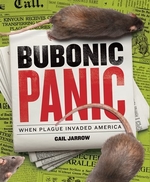
BUBONIC PLAGUE WHEN PLAGUE INVADED AMERI
By: gail jarrow | Published: June 2016
A School Library Journal Best Book of the Year A New York Public Library Best Book for Teens In March 1900, San Francisco's health department... [Read More]
A School Library Journal Best Book of the Year A New York Public Library Best Book for Teens In March 1900, San Francisco's health department investigated a strange and horrible death in Chinatown. A man had died of bubonic plague, one of the world's deadliest diseases. But how could that be possible? Bubonic Panic tells the true story of America's first plague epidemic—the public health doctors who desperately fought to end it, the political leaders who tried to keep it hidden, and the brave scientists who uncovered the plague's secrets. Once again, acclaimed author and scientific expert Gail Jarrow brings the history of a medical mystery to life in vivid and exciting detail for young readers. This title includes photographs and drawings, a glossary, a timeline, further resources, an author's note, and source notes.
- ISBN
9781620917381 - Binding
Hardcover - Category
Mind & Body - Human Anatomy & Physiology
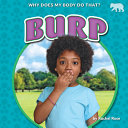
BURP - WHY DOES MY BODY DO THAT
By: rachel rose | Published: August 2022
After I eat a big meal, my tummy is so full it feels like it's going to explode. Buurrp! Why does my body do that? Explore the silly body science of... [Read More]
After I eat a big meal, my tummy is so full it feels like it's going to explode. Buurrp! Why does my body do that? Explore the silly body science of burps. Learn how they happen, what can be done to stop burping, and more. Lively text and bright layouts make this a perfect fit for budding scientists asking big body questions.
- ISBN
9798885094573 - Binding
Paperback - Category
Mind & Body - Human Anatomy & Physiology
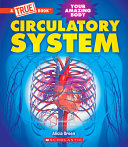
CIRCULATORY SYSTEM
By: alicia green | Published: February 2024
Discover the main systems of our amazing human body with this new series of books! The blood that flows through your body constantly brings food and... [Read More]
Discover the main systems of our amazing human body with this new series of books! The blood that flows through your body constantly brings food and oxygen to your muscles, organs, and bones and carries away waste. And it is all powered by that magnificent muscle, your heart. Did you know that your heart beats about 100,000 times a day? Or that the blood in your body travels a total of 12,000 miles daily? That's more than four times the width of the United States from coast to coast! Learn all this and more in Circulatory System. ABOUT THE SERIES: The human body is a complex ⹀ and remarkable ⹀ machine. Digesting our food. Pumping our blood. Walking, running, and dancing. It takes our many body systems working together to keep us alive and living our lives to the fullest. This set of A True Books offers an in-depth look at our amazing bodies ⹀ one system at a time. Interesting information is presented in a fun, friendly way ⹀ and in the simplest terms possible ⹀ giving students a "behind-the-scenes" look at how their bodies work.
- ISBN
9781339020938 - Binding
Hardcover - Category
Mind & Body - Human Anatomy & Physiology
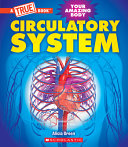
CIRCULATORY SYSTEM A TRUE BOOK - YOUR AM
By: alicia green | Published: February 2024
Discover the main systems of our amazing human body with this new series of books! The blood that flows through your body constantly brings food and... [Read More]
Discover the main systems of our amazing human body with this new series of books! The blood that flows through your body constantly brings food and oxygen to your muscles, organs, and bones and carries away waste. And it is all powered by that magnificent muscle, your heart. Did you know that your heart beats about 100,000 times a day? Or that the blood in your body travels a total of 12,000 miles daily? That's more than four times the width of the United States from coast to coast! Learn all this and more in Circulatory System. ABOUT THE SERIES: The human body is a complex ⹀ and remarkable ⹀ machine. Digesting our food. Pumping our blood. Walking, running, and dancing. It takes our many body systems working together to keep us alive and living our lives to the fullest. This set of A True Books offers an in-depth look at our amazing bodies ⹀ one system at a time. Interesting information is presented in a fun, friendly way ⹀ and in the simplest terms possible ⹀ giving students a "behind-the-scenes" look at how their bodies work.
- ISBN
9781339020945 - Binding
Paperback - Category
Mind & Body - Human Anatomy & Physiology
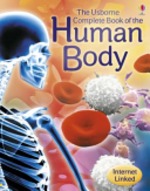
COMPLETE BOOK OF THE HUMAN BODY
By: anna claybourne | Published: December 2015
A fact-packed, illustrated introduction to the human body and how it works. Full of extraordinary photographs plus activities and experiments to try,... [Read More]
A fact-packed, illustrated introduction to the human body and how it works. Full of extraordinary photographs plus activities and experiments to try, it explores everything from allergies to brain waves, from x-rays to zits.
- ISBN
9781474902939 - Binding
Hardcover - Category
Mind & Body - Human Anatomy & Physiology
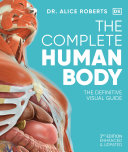
COMPLETE HUMAN BODY - DEFINITIVE VISUAL
By: alice roberts | Published: April 2023
We inhabit it, we are it, and we are surrounded by 6.8 billion examples of it on the planet – the human body. Some parts of it are still... [Read More]
We inhabit it, we are it, and we are surrounded by 6.8 billion examples of it on the planet – the human body. Some parts of it are still mysteries to science and much is a mystery to the average person on the street. But we've come a long way from the sketches and diagrams drawn by the first anatomists in Ancient Greece. Making full use of new medical procedures and imaging techniques, The Complete Human Body is the definitive guide to the development, form, function, and disorders of the human body, illustrated with unprecedented clarity by new computer-generated artworks and the latest medical and microscopic imaging. Exploring the body's form and function in greater depth than any other popular reference, from muscle structure and activity to motor pathways within the brain, The Complete Human Body will have great appeal to students and a broad range of healthcare professionals, as well as families. Includes an interactive DVD and website!
- ISBN
9780744073676 - Binding
Hardcover - Category
Mind & Body - Human Anatomy & Physiology
